Предатели или жертвы войны: коллаборационизм в Карелии в годы Второй мировой войны 1939-1945 гг. - [72]
All of these actions carried out Ьу People's Commissariat for State Security of the Karelian-Finnish SSR in the beginning of the war were of compulsory nature. However, as it is seen from the further events during the Finnish occupation of Karelia, they significantly reduced the social base of collaborationism development.
The absence of wide development of collaborationism on the occupied Karelian territory became the main argument for the government of the repuЬlic on summer 1944 when the Central Committee of the All-Union Communist Party considered the issue about the Karelian-Finnish SSR liquidation and removal of Karelians, Veps and Finns to Siberia. The repuЬlic was saved and the tragic consequences of people's deportation managed to Ье avoided[510].
V. I. Boyarsky in the foregoing monograph said that after several years of the occupation 20 % from 90 % of patriots would join the Resistance movement and would actively fight against the enemy. About 70 % would take up passive and waiting position[511]. Examination of the numerous of documentary, and primarily archival sources, which were previously secret and only recently became availaЫe to researches shows that these numbers also generally correspond to Karelia. The majority of population caught in the occupation zone didn't cooperate with occupants, but took up passive position aiming primarily at surviving in the extreme conditions of the war. And it concerned party officials as well as ordinary civilians. So, from July 1944 to Мау 1945 the Central Committee of the All-Union Communist Party of the Karelian-Finnish SSR repeatedly considered the cases about communists left on the occupied territory. The decisions of the issues emphasized that many of communists in the occupied regions hid or destroyed their party membership cards, worked in their personal farms. They didn't have active position in the struggle against occupants, didn't cooperate with partisans and undergrounders, which worked as elders. Such communists were excluded from the party with formulation "for passing behavior"[512].
Generally the major part of local people in spite of massive nationalistic propaganda remained loyal to their motherland and didn't want to move to alien country especially to one that was on the edge of military defeat. It should Ье taken into consideration that many people of the occupied Ьу Finns regions of Karelia waited for their fathers, husbands, brothers and sons fought in the Red Army.
However for some part of the Soviet population caught in the occupation zone, evacuation to Finland was inevitaЫe: for those who served for Finnish occupation authorities and were afraid of arraignment for treason; women married Finnish men and men gone to related battalions.
The analysis of the documentary materials shows that the national policy of Finnish occupation regime in Karelia in 1941–1944 aimed at division of population Ьу nationality {Finno-Ugrians and Russians) didn't bring expected results — Soviet Karelians, Veps, Finns failed to Ье brought to the Finnish side. Moreover, those who were to liberate from "Russian slavery'; defended independence of their country with arms in their hands along with Russians and other peoples of the Soviet Union.
In the Soviet Union people who collaborated with Finnish occupation regime or fought as а part of Finnish troops against the Red Army and who stayed on the territory of the USSR after the war were regarded as traitors of the Motherland for а long time and were forgotten. For many years there was staЫe negative attitude to the population which unwillingly was caught in the Finnish occupation. The rejection was shown primarily Ьу the Soviet and economic bodies. It is proved Ьу many memories of the people who survived through the occupation. For example, а resident of village Sheltozero Taisiya Maksimova answered to the question "How did Soviet authorities and people who returned from evacuation behave towards you after all?": "The authority didn't say anything but we were so tortured on timber stockpiling! Especially those who were occupied! Sometimes they didn't рау us money, only said something unclear, and we didn't have normal living conditions". In Paisky timber industry enterprise people lived in cold buildings, and one more thing that they did — the card was 600 g (bread), but they took off 200 g. They punished us only for that we were in the occupation. In different ways…"[513].
The situation changed а little after the collapse of the USSR. In present times for а majority of new democratic Russia people who cooperated with the occupational authorities are collaborationists and remain traitors of their nation who took the side of the enemy in the difficult times of their country.
The proЫem of collaborationism in Karelia and Finland during World War II was not availaЫe for scientists for а long time for ideological reasons and only now becomes the object of academic interest of Russian historians. Many issues have to Ье studied: clarification of the exact number of Soviet people collaborated with Finnish occupational authorities during World War ll, determination of the reasons and social base of it. In the analysis of the issue some more points should Ье specified: how adequate were the repressions of the Finnish authorities to the people who cooperated with Soviet state and military bodies during the Winter War and how adequate were the repressions of the Soviet authorities in 1941–1944 to those who were considered as collaborationists: primarily to f ormer prisoners of war and repatriates who lived and worked on the occupied Karelian territory and then removed to Finland.
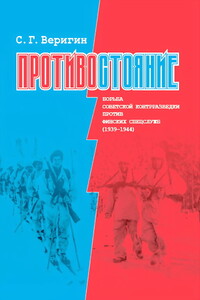
Монография посвящена слабо изученной проблеме в отечественной историографии Второй мировой войны. Автор показывает борьбу органов безопасности Карелии против финских спецслужб в советско-финляндской войне 1939–1940 гг., в межвоенный период (март 1940 — июнь 1941 г.) и в годы Великой Отечественной войны на Карельском фронте (июнь 1941 — сентябрь 1944 г.). Особое внимание уделено противодействию деятельности финских разведывательно-диверсионных школ в советском тылу в 1942–1944 гг., располагавшихся как на оккупированной территории Карелии, так и в приграничных районах Финляндии.Издание подготовлено на базе широкого круга источников, основу которого составили архивные документы из фондов государственных и ведомственных архивов России и Финляндии.
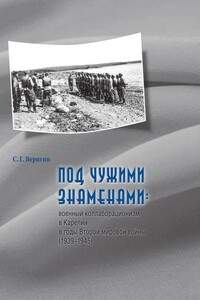
Монография посвящена одному из проявлений коллаборационизма на территории Карелии и Финляндии в годы Второй мировой войны — сотрудничеству местного населения и военнослужащих с оккупационными властями в военной сфере и является своеобразным продолжением предыдущей монографии автора — «Предатели или жертвы войны: коллаборационизм в Карелии в годы Второй мировой войны 1939–1945 гг.», вышедшей в 2012 г. Издание подготовлено на базе широкого круга источников, основу которого составили архивные документы из фондов государственных и ведомственных архивов России и Финляндии.

Книга рассказывает об истории строительства Гродненской крепости и той важной роли, которую она сыграла в период Первой мировой войны. Данное издание представляет интерес как для специалистов в области военной истории и фортификационного строительства, так и для широкого круга читателей.
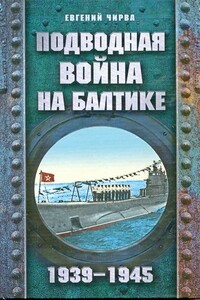
Боевая работа советских подводников в годы Второй мировой войны до сих пор остается одной из самых спорных и мифологизированных страниц отечественной истории. Если прежде, при советской власти, подводных асов Красного флота превозносили до небес, приписывая им невероятные подвиги и огромный урон, нанесенный противнику, то в последние два десятилетия парадные советские мифы сменились грязными антисоветскими, причем подводников ославили едва ли не больше всех: дескать, никаких подвигов они не совершали, практически всю войну простояли на базах, а на охоту вышли лишь в последние месяцы боевых действий, предпочитая топить корабли с беженцами… Данная книга не имеет ничего общего с идеологическими дрязгами и дешевой пропагандой.

Автор монографии — член-корреспондент АН СССР, заслуженный деятель науки РСФСР. В книге рассказывается о главных событиях и фактах японской истории второй половины XVI века, имевших значение переломных для этой страны. Автор прослеживает основные этапы жизни и деятельности правителя и выдающегося полководца средневековой Японии Тоётоми Хидэёси, анализирует сложный и противоречивый характер этой незаурядной личности, его взаимоотношения с окружающими, причины его побед и поражений. Книга повествует о феодальных войнах и народных движениях, рисует политические портреты крупнейших исторических личностей той эпохи, описывает нравы и обычаи японцев того времени.

В книге рассказывается история главного героя, который сталкивается с различными проблемами и препятствиями на протяжении всего своего путешествия. По пути он встречает множество второстепенных персонажей, которые играют важные роли в истории. Благодаря опыту главного героя книга исследует такие темы, как любовь, потеря, надежда и стойкость. По мере того, как главный герой преодолевает свои трудности, он усваивает ценные уроки жизни и растет как личность.
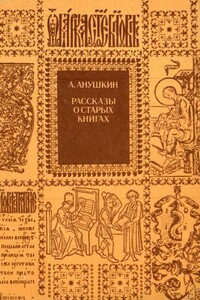
Имя автора «Рассказы о старых книгах» давно знакомо книговедам и книголюбам страны. У многих библиофилов хранятся в альбомах и папках многочисленные вырезки статей из журналов и газет, в которых А. И. Анушкин рассказывал о редких изданиях, о неожиданных находках в течение своего многолетнего путешествия по просторам страны Библиофилии. А у немногих счастливцев стоит на книжной полке рядом с работами Шилова, Мартынова, Беркова, Смирнова-Сокольского, Уткова, Осетрова, Ласунского и небольшая книжечка Анушкина, выпущенная впервые шесть лет тому назад симферопольским издательством «Таврия».
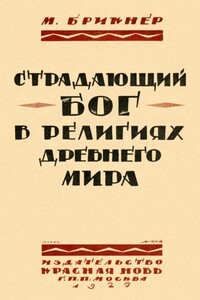
В интересной книге М. Брикнера собраны краткие сведения об умирающем и воскресающем спасителе в восточных религиях (Вавилон, Финикия, М. Азия, Греция, Египет, Персия). Брикнер выясняет отношение восточных религий к христианству, проводит аналогии между древними религиями и христианством. Из данных взятых им из истории религий, Брикнер делает соответствующие выводы, что понятие умирающего и воскресающего мессии существовало в восточных религиях задолго до возникновения христианства.